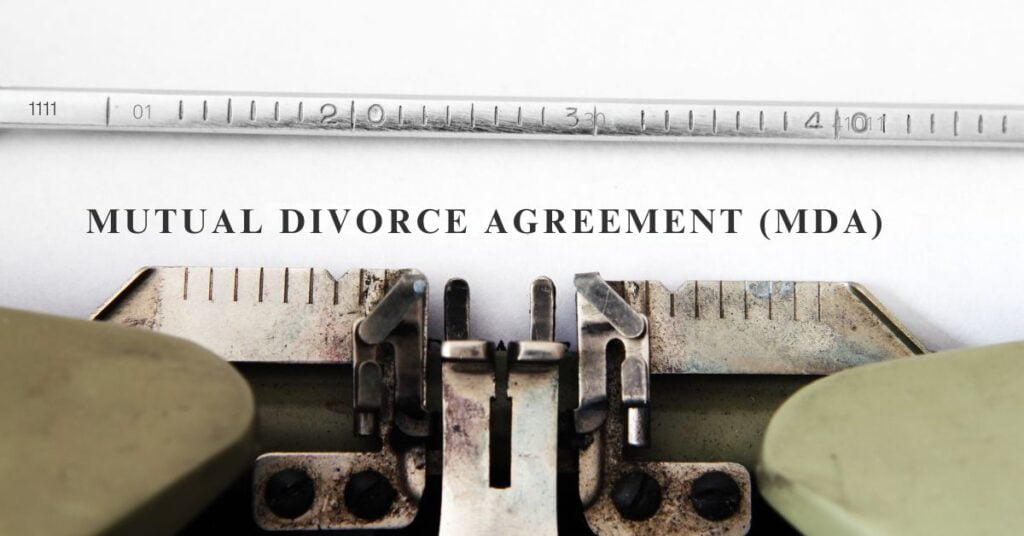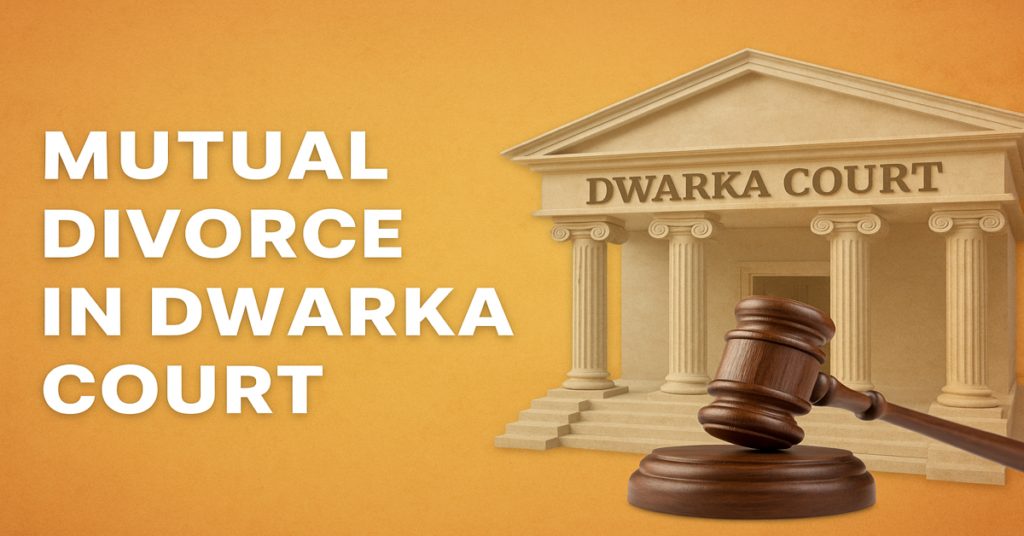Divorce is a challenging phase in anyone’s life, and when it comes to parting ways amicably, a Mutual Divorce Agreement (MDA) becomes a crucial document. In India, where family values and traditions are deeply rooted, the concept of mutual divorce is gaining acceptance as a more harmonious way to end a marriage. In this blog, we will delve into the intricacies of Mutual Divorce Agreements in India, guiding you through the legal processes and key considerations.
What is a Mutual Divorce Agreement (MDA)?
Think of an MDA as a roadmap, charting the course for an amicable split. It’s a legally binding document outlining the mutually agreed terms of your divorce, covering crucial aspects like:
- Division of Property: How will you split your assets, liabilities, and marital home? Will one spouse buy out the other, or will it be an equal division?
- Spousal Support (Maintenance and/or Alimony): Is one spouse entitled to financial support from the other? If yes, what will be the amount and duration? Will the amount be paid monthly or one time?
- Child Custody and Visitation: Who will have primary custody of the children? How will visitation rights be structured?
- Stridhan and Dowry: How the dowry and stridhan items will be divided?
- Settlement of Pending Litigation: Are there any ongoing legal disputes that need to be addressed as part of the divorce?
Who Decides the Terms and Conditions in MDA?
In a Mutual Divorce Agreement, the terms and conditions are decided by the divorcing spouses themselves. Both parties collaborate to reach an agreement on crucial aspects such as maintenance, alimony, property division, division of stirdhan and dowry articles, child custody, and visitation rights.
It is a voluntary and consensual process where the couple, often with the assistance of legal counsel, negotiates and finalizes the terms that best suit their individual circumstances. The goal is to achieve a fair and amicable resolution, and the terms agreed upon are then documented in the Mutual Divorce Agreement, which is submitted to the court for approval.

Role of a Mutual Divorce lawyer in preparing MDA
A Mutual Divorce Lawyer plays a pivotal role in facilitating the process of reaching a consensus between divorcing spouses. Their responsibilities include:
Legal Guidance: Providing legal advice to ensure both parties understand their rights, obligations, and the implications of the decisions they make during the divorce process.
Documentation: Assisting in the preparation and filing of the necessary legal documents, including the Mutual Divorce Agreement, to ensure compliance with legal requirements.
Negotiation: Acting as a mediator to help spouses negotiate terms related to alimony, property division, child custody, and other crucial aspects, aiming for a fair and mutually agreeable resolution.
- Conflict Resolution: Addressing conflicts and disputes that may arise during the negotiation process, working towards an amicable settlement and avoiding unnecessary litigation.
Legal Compliance: Ensuring that the Mutual Divorce Agreement complies with applicable laws and regulations, preventing future legal complications.

The Importance of Precision in Your MDA Terms
When creating a Mutual Divorce Agreement, it is crucial to approach the drafting process with great care. Each term should be articulated with precision to prevent potential legal conflicts in the future. It’s understandable that emotions can run high during this challenging time, and the desire to conclude the divorce swiftly is common. However, rushing through the terms may have costly consequences later on. Taking the necessary time to ensure that the terms are exceptionally clear and in your best interest is of utmost importance. This thoughtful approach can safeguard against potential disputes and contribute to a smoother resolution of the divorce proceedings.
Crafting Your MDA: Two Approaches to Consider
A Mutual Divorce Agreement (MDA) can take two forms. Firstly, it can be crafted as a Memorandum of Understanding (MOU), a kind of agreement. This MOU can be later attached to your Mutual Divorce Petition. Alternatively, the terms and conditions of the MDA can be directly included within the Mutual Divorce Petition itself. Choose the approach that suits your situation best.
MDA Format
Mentioned below is a basic template, it’s crucial to note that divorce agreements are highly individualized and should be customized to meet the specific needs and circumstances of the parties involved.
Mutual Divorce Agreement Template
[Your Name] and [Spouse’s Name] MUTUAL DIVORCE AGREEMENT
1. Introduction
This Mutual Divorce Agreement (“Agreement”) is entered into on [Date] between [Your Full Name], hereinafter referred to as “Party A,” and [Spouse’s Full Name], hereinafter referred to as “Party B.”
2. Divorce Proceedings
Both parties mutually consent to seek a divorce and have been living separately for the statutory period required by law.
3. Child Custody and Visitation
a. Child Custody: [Specify custody arrangements]
b. Visitation Rights: [Specify visitation schedules]
4. Child Support
Both parties agree to contribute to the financial support of the child as follows: [Specify terms].
5. Alimony/Spousal Support
a. Party A agrees to pay/receive alimony in the amount of [Specify amount] per [Specify frequency].
6. Property Division
a. Real Estate: [Specify how real estate will be divided]
b. Personal Property: [Specify how personal property will be divided]
7. Debts and Liabilities
Both parties agree to assume responsibility for the following debts and liabilities: [List debts and specify responsibility].
8. Dispute Resolution
Any disputes arising from this Agreement will be resolved through [Specify dispute resolution method].
9. Confidentiality
Both parties agree to maintain the confidentiality of the terms of this Agreement.
10. Finality of Agreement
This Agreement represents the final and complete understanding between the parties concerning the divorce.
__________________________ Date: [Party A’s Signature]
[Your Full Name]
__________________________ Date: [Party B’s Signature]
[Spouse’s Full Name]
Remember, this is a basic template, and it’s essential to consult with a legal professional to ensure that your Mutual Divorce Agreement complies with local laws and adequately addresses your specific situation.
Conclusion
In conclusion, navigating the seas of matrimony towards a mutual divorce in India involves a meticulous understanding of the legal processes and considerations surrounding the Mutual Divorce Agreement (MDA). This crucial document serves as a roadmap for an amicable split, addressing vital aspects such as property division, spousal support, child custody, and more. The collaborative efforts of divorcing spouses, often guided by a Mutual Divorce Lawyer, play a pivotal role in achieving a fair and consensual resolution.
The importance of precision in drafting the MDA terms cannot be overstated, as careful consideration helps prevent future disputes. The blog also highlights two approaches to crafting the MDA, offering a basic template while emphasizing the need for customization with legal guidance. As couples navigate the emotional complexities of divorce, taking the time to thoughtfully outline the terms ensures a smoother and more harmonious resolution, safeguarding against potential legal complications in the future.




